
- Homepage
- Brand
- Department
- Main Purpose
- Material
- Abs (363)
- Abs+aluminium (32)
- Abs+aluminum (11)
- Aluminum Alloy (17)
- Composite Material (19)
- Cotton (108)
- Diving Cloth (20)
- Fabric (70)
- Food-grade Silicone (8)
- Iron (172)
- Laser (6)
- Led Light & Fabric (8)
- Metal Combination (38)
- Neoprene (9)
- Ok Cloth+tpu (6)
- Plastic (20)
- Pvc (53)
- Sbr (68)
- Steel, Iron (17)
- Tarpaulin (65)
- Other (488)
- Power Source
- Type
- Body Massager (34)
- Circulation Massager (13)
- Dpl Light (5)
- Electric Heating Pad (10)
- Electrotherapy (4)
- Foot Massage Machine (21)
- Infrared (5)
- Infrared Light (374)
- Laser (131)
- Light Relief Therapy (381)
- Light Therapy (10)
- Light Therapy Box (4)
- Light Therapy Lamp (172)
- Low Level Laser (102)
- Massage Cup (3)
- Massage Gun (22)
- Mini Massager (6)
- Red Light Therapy (8)
- Rife Machine (5)
- Unit (3)
- Other (285)
1-40hz Stroke Recovery Device 810nm Led Helmet for Parkinson Brain Injury Pain
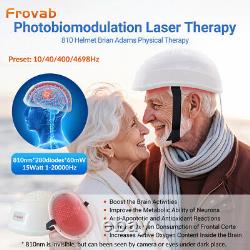
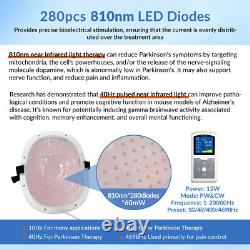


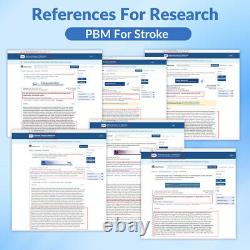
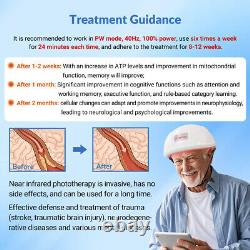
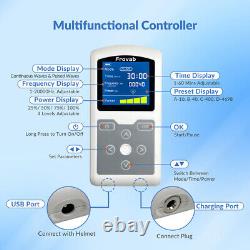



4 Class Handheld Light Therapy. 3 Class Cold Laser Device. 1070 Helmet for Brain Disease. 810nm Helmet for Brain Disease.
360PCS 7in1 LED Mask for Face. 990PCS 7in1 LED Mask for Body.
Single Lamp Bead Laser Pointer. Therapy Machine For Stroke Parkinson Alzheimer Depression. Photobiomodulation (PBM) with red (near infrared) LEDs (LED), innovative therapy for various neurological and psychological disorders, stimulate mitochondrial respiratory complex, increase ATP synthesis, improve the metabolic ability of neurons and can stimulate anti-inflammatory, anti-apoptotic and antioxidant reactions as well as neurogenesis and synaptogenesis.
The photobiomodulation of the brain equipment is based on the use of an infrared LED with a wavelength of 810 nm. It is one of the best for transcranial LED / light stimulation for the PBM helmet 280 LEDs with a wavelength of 810 nm were used. This provides the opportunity to treat various mental illnesses. This opens up therapeutic opportunities for patients who have suffered stroke, Parkinson's disease, Alzheimer's disease and other cerebral diseases requiring LED therapy.
The brain suffers from many different disorders that can be classified into three broad groupings: traumatic events (stroke, traumatic brain injury, and global ischemia), degenerative diseases (dementia, Alzheimer's and Parkinson's), and psychiatric disorders (depression, anxiety, post traumatic stress disorder). There is some evidence that all these seemingly diverse conditions can be beneficially affected by applying light to the head.This cordless treatment helmet with 280pcs LED 810nm near-infrared light, equipped with 10,000 mAh rechargeable battery offers 4 preset frequencies: 10Hz 40Hz 400Hz 4698Hz with 1-20000Hz continuous and pulsed modes for different red light therapy needs. We usually recommend that the device be used once or twice a day, each time for 20-30 minutes. What You Get: 1 infrared light therapy helmet, 1 cable, 1 adapter, 1 controller, 1 user manaul. Photobiological modulation (PBM) therapy is defined as the use of non ionizing electromagnetic energy to trigger photochemical changes within cellular structures that accept photons.
Mitochondria are particularly receptive to this process. At the cellular level, visible red and near-infrared (NIR) energy is absorbed by mitochondria, which perform the function of producing cellular energy called ATP. The key to the entire process is a mitochondrial enzyme called cytochrome oxidase C, a chromophore that receives specific wavelengths of photon energy when its function is below PAR. Brain photobiological regulation of cytochrome c oxidase (CCO, also known as complex IV) is a specific structure in mitochondria that acts as a photon receptor, thereby playing the role of PBM effect. PBM can prevent respiratory depression (correspondingly reducing energy storage in stress cells) and reverse the transfer of oxygen in cytochrome C oxidase by reducing oxide (NO).
This triggers transcription factors that alter gene expression levels. The binding of nitric oxide (NO) to copper (or heme) centers inhibited by mitochondrial cytochrome C oxidase (CCO) in cellular respiration. However, cytochrome C oxidase absorbs red or near-infrared (NIR) light, separates nitric oxide, restores oxygen, increases cellular respiration, and forms adenosine triphosphate (ATP). Oxygen (ROS) and cyclic adenosine phosphate (CAMP) have beneficial effects on producing PBM. How does the 810nm light therapy helmet work? The near-infrared wavelength of 810nm penetrates the skull directly to the brain, effectively treating brain diseases caused by cerebral vascular occlusion. It has a good therapeutic effect on brain diseases such as dementia, Parkinson's disease, and stroke. This wavelength (confirmed in 2018) is one of the best wavelengths for transcranial light/light stimulation. The 810nm intranasal device allows you to bypass the skull and transmit 810nm near-infrared light to the brain, driving processes in living cells and helping repair nerve cells. It is also possible to increase nitric oxide levels by improving the flexibility of the inner membrane of blood vessels, thereby increasing blood flow in the brain. This will open blood vessels, allowing more oxygen to penetrate deep into the white matter of the brain. Provides opportunities for the treatment of various mental illnesses.This provides treatment opportunities for stroke, memory loss, Parkinson's disease, Alzheimer's disease, and other brain diseases that require physical therapy. Product Name:810nm Near Infrared Light therapy for stroke parkinson. Number of Diodes: 280 Diodes LEDs. Near Infrared Light Wavelength: 810nm280diodes60mW.
Working Mode: Continuous Mode & Pulsed Mode, Adjustable. 4 Preset Frequency: 10Hz / 40Hz / 400Hz / 4698 Hz. Power Adjustment: 25% 50% 75% 100%, Adjustable. Treat Time: 1-60 Minutes, Adjustable. What does 810nm helmet treat? Traumatic events (stroke, traumatic brain injury, and global ischemia). Degenerative diseases (dementia, Alzheimer's and Parkinson's).Psychiatric disorders (depression, anxiety, post traumatic stress disorder). Increased blood flow, energy, neuroprotection, less inflammation, brain repair.
For long-term chronic diseases, such as degenerative diseases, the recommended course of treatment is 3-6 months. For short-term symptoms, such as concussion, migraine, depression, etc. The recommended course of treatment is 1-3 months. According to the severity of the patient's symptoms, use 4-6 times a week, 1-2 times a day. At the beginning, it is recommended to give the patient a process of adaptation.
About the power intensity and time, you can start from 25%, 12 minutes. Gradually increase the power intensity and time step by step. After a adapation period, can use 75-100% intensity for 24-30 minutes.
Ization with Alpha Waves: PTSD is often associated with heightened anxiety. Hypervigilance, and disrupted sleep patterns. The 10 Hz frequency aligns with the brain's alpha. Wave frequency (8-12 Hz), which is associated with a relaxed and calm state.
Relaxation, making it effective for managing PTSD. Cy has been found to promote neuroregulation, which. Helps in stabilizing mood and reducing the intensity of PTSD symptoms. Ng Effect: By promoting alpha wave activity, 10 Hz can help calm the overactive brain.
Regions involved in the stress response, which is often hyperactive in individuals with PTSD. Frequency: 10 Hz or 40 Hz. S of head injury, 10 Hz is beneficial. Neuroprotection, reducing inflammation, and promoting neurogenesis the growth of new. This frequency supports the brain's natural healing processes, aiding in recovery from.
Chondrial Function: The 10 Hz pulsed mode optimizes mitochondrial function, which is. Crucial for cellular energy production and repair processes following a head injury. Ve Synchronization: The 40 Hz frequency is within the gamma brain wave range. Hich is associated with cognitive processing, attention, and memory. Disrupted in individuals with head injuries, so 40 Hz stimulation can help restore these functions.
Cognitive Enhancement: 40 Hz pulsing has been shown to improve cognitive functions such as. Memory and attention, which are often impaired after a head injury. It may also help in reducing.
The buildup of harmful proteins in the brain, which can occur following trauma. For PTSD: 10 Hz is typically recommended due to its calming effects and ability to re. Anxiety by synchronizing with the brain's alpha waves. Ad Injury: Both 10 Hz and 40 Hz can be effective. 10 Hz is ideal for neuroprotection and.
Recovery, while 40 Hz can be beneficial for enhancing cognitive function and repairing neural. 1:30 days RETURN/ REPLACEMENT.4:If you have a defective item, you want to return or discount. Or replace item for you. Welcome to zjzk-lasertherapy official store!
1: All the goods in the store are ready stock. We focus on medical laser therapy devices. 3: Don't worry if you have any questions, please contact our customer service through chat to answer you.4:Thank you for your support and trust.

